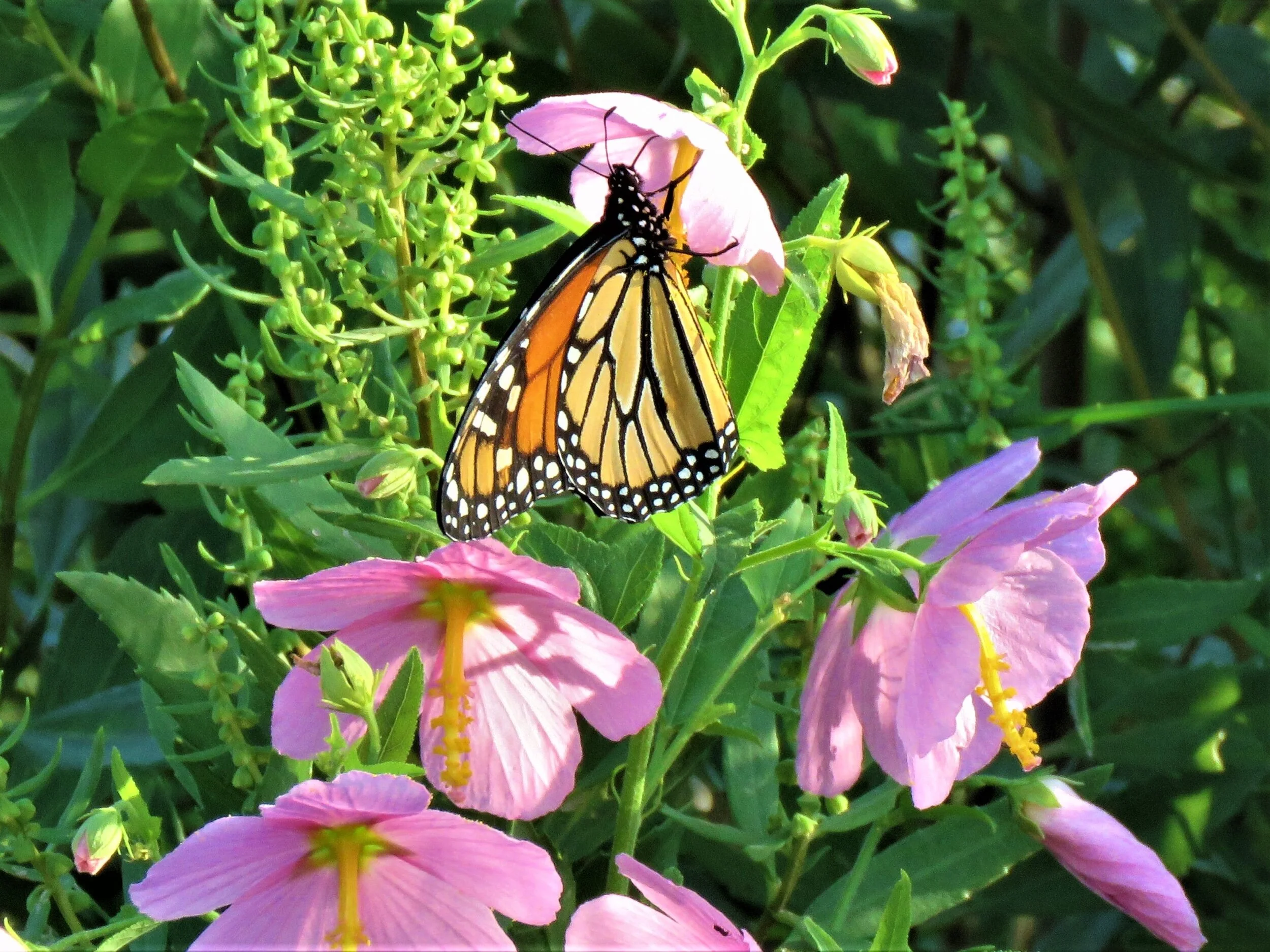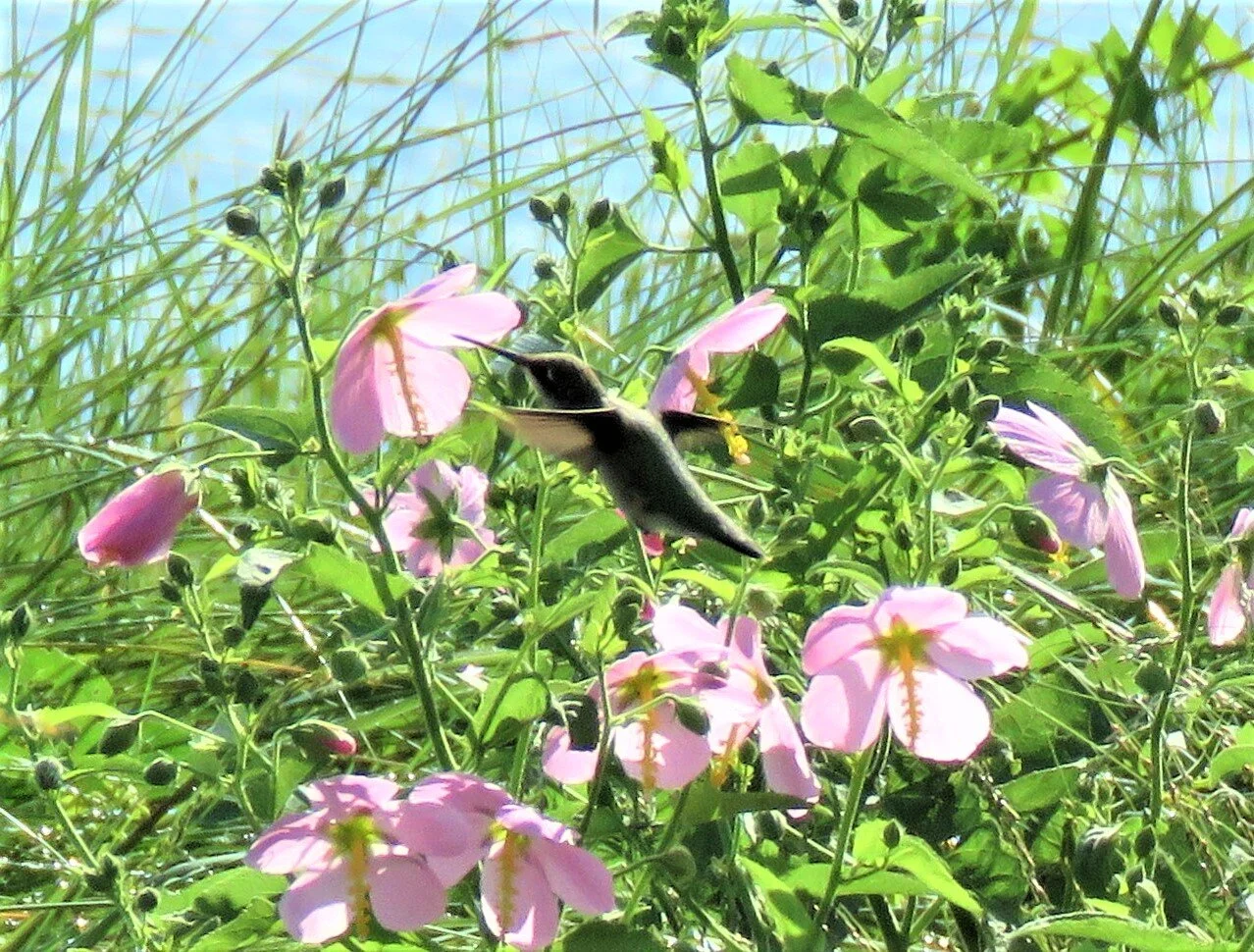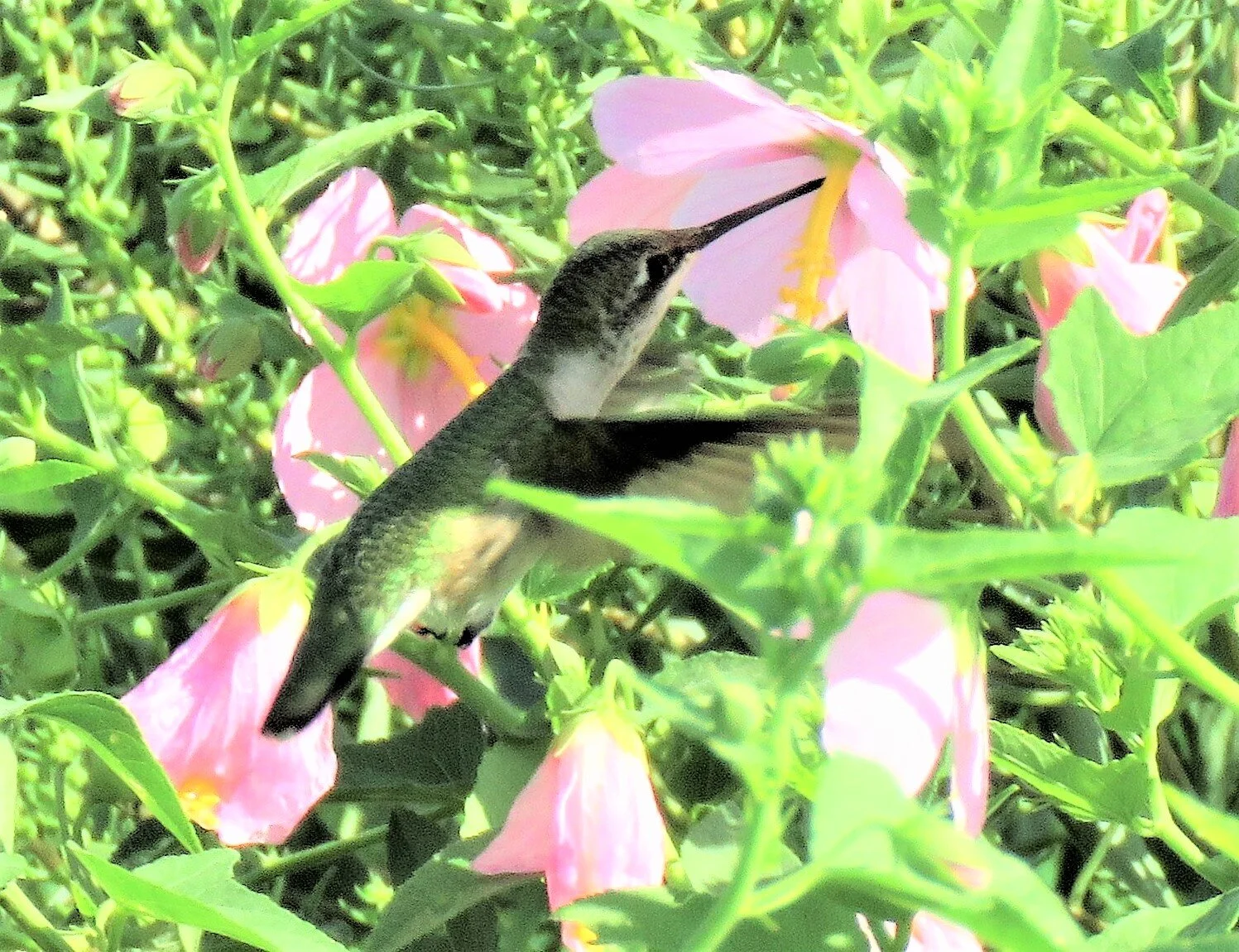Plant of the Month August 2020: Seashore Mallow
Text and photos by Betsy Washington
Seashore Mallow Flowers
Seashore Mallow goes by many fitting names - Virginia Saltmarsh Mallow, Coastal Mallow, or Virginia Fen-Rose – but no matter what name this lovely coastal plant goes by, it puts on a dazzling show in late summer and fall that will make you fall in love! I look forward to its blooms every August along our natural shorelines and in the marshes along our brackish rivers. Seashore Mallows light up coastal marshes and even some freshwater tidal marshes beginning in early August and lasting into October with dozens of pale pink to rose-pink flowers on a single plant. This large bushy perennial typically reaches 3 to 5’ high and 3 or 4’ wide, with soft triangular gray-green leaves that are about twice as long as wide with two basal lobes. Leaves are covered with soft downy hairs giving the foliage a soft gray look, providing the perfect foil for the pink flowers. The showy three inch diameter flowers cover the upper branches with dozens of flowers, each lasting only a day, then closing at night. Blooms are so prolific though, that plants remain full of blooms from later summer to late fall. Like Seashore Mallow’s relatives, the hibiscus, the showy flowers have five rounded pale pink to rose petals that surround a bright yellow column consisting of stamens surrounding five fused carpels or female reproductive organs. Flowers are followed by hairy brown fruit consists of a flat ring of 5 capsules, each containing a seed, a characteristic of the mallows.
As you might expect of a plant of coastal marshes, Seashore Mallow tolerates brackish water and salt spray, and can even shallow standing water. They prefer acidic, sandy soils but can tolerate clay and dry soils in sunny sites. Despite their specialized natural habitat, they are easy to grow in regular garden soil and make a handsome, long-blooming addition to the late summer-fall garden with their profuse blooms and handsome gray-green foliage. Try them with other native plants that bloom at the same time like Bluemist Flower, False Obedient Plant, Asters, and Mountain Mints to name just a few.
Seashore Mallow Provides Nectar for Monarch
Seashore Mallows attract a variety of pollinators and showy butterflies to their nectar and are also hummingbird magnets. In addition, the caterpillars of several butterflies use Seashore Mallows as a host plant, including the Painted Lady and the Gray Hairstreak. The seeds have a high oil content and provide valuable food for migrating songbirds, waterfowl, and small mammals. Indigenous tribes used Seashore Mallows to treat heat exhaustion, and to relieve menstrual cramping and induce labor. And for the cook, the beautiful flowers are edible and make lovely garnishes, and an extract of the leaves can be used to make a tea.
Seashore Mallows have a large taproot and make a valuable shoreline buffer plant, preventing erosion, minimizing loss of sediments and particulate matter, and sequestering carbon. They add a welcome color to shoreline plantings along with the hummingbirds and butterflies they attract, and will thrive with their natural ecological associates - saltmarsh and saltmeadow cordgrasses, Rose Mallows, and even Seaside Goldenrods. They are also perfect to provide late summer colorin a rain garden, and of course are late season stars in pollinator and hummingbird gardens.
I would be remiss to the child in all of us if I didn’t mention its relationship to the marshmallow. While the Seashore Mallow was not the basis for the roast-over-a-campfire marshmallow, a close relative, the European Marsh Mallow, found in Europe was the original source for the marshmallow. It contains a mucilaginous root that was made into a paste used to make the confection we all know today. Speaking of relatives, cotton and okra are also in the Mallow family – the Malvaceae.
Be sure to visit the NNNPS Fall Native Plant Sale, being held this year at Dug In Farms off of Fleets Bay Rd every day from Sept 19 – Oct 10 to find Seashore Mallows and other beautiful Northern Neck native plants to grace your gardens. Native Plant Society experts will be on hand each Saturday morning during the sale from 9:00-12:30 to help you pick the perfect plants for your garden.
Seashore Mallow Attracts Ruby Throated Hummingbird




